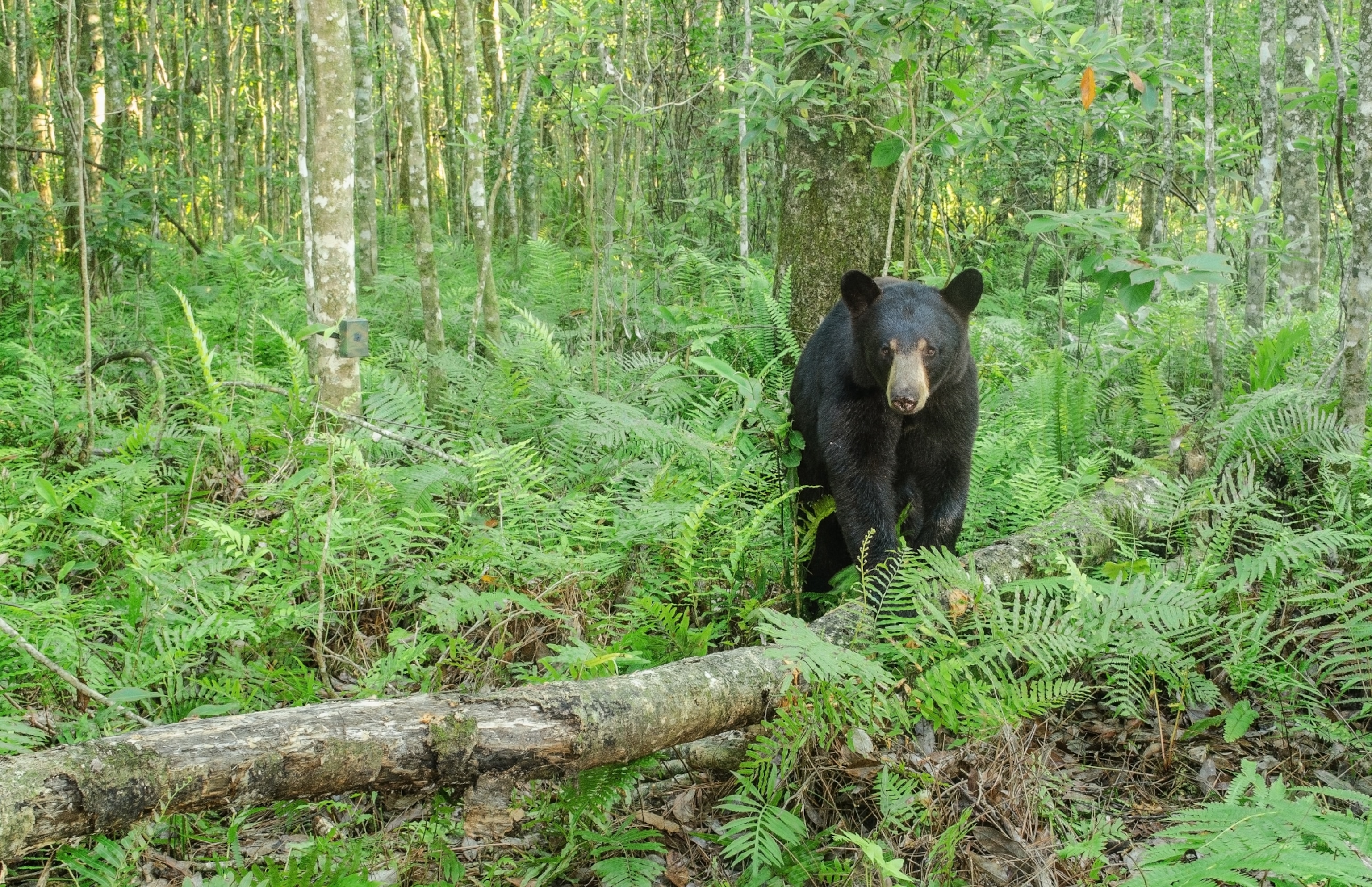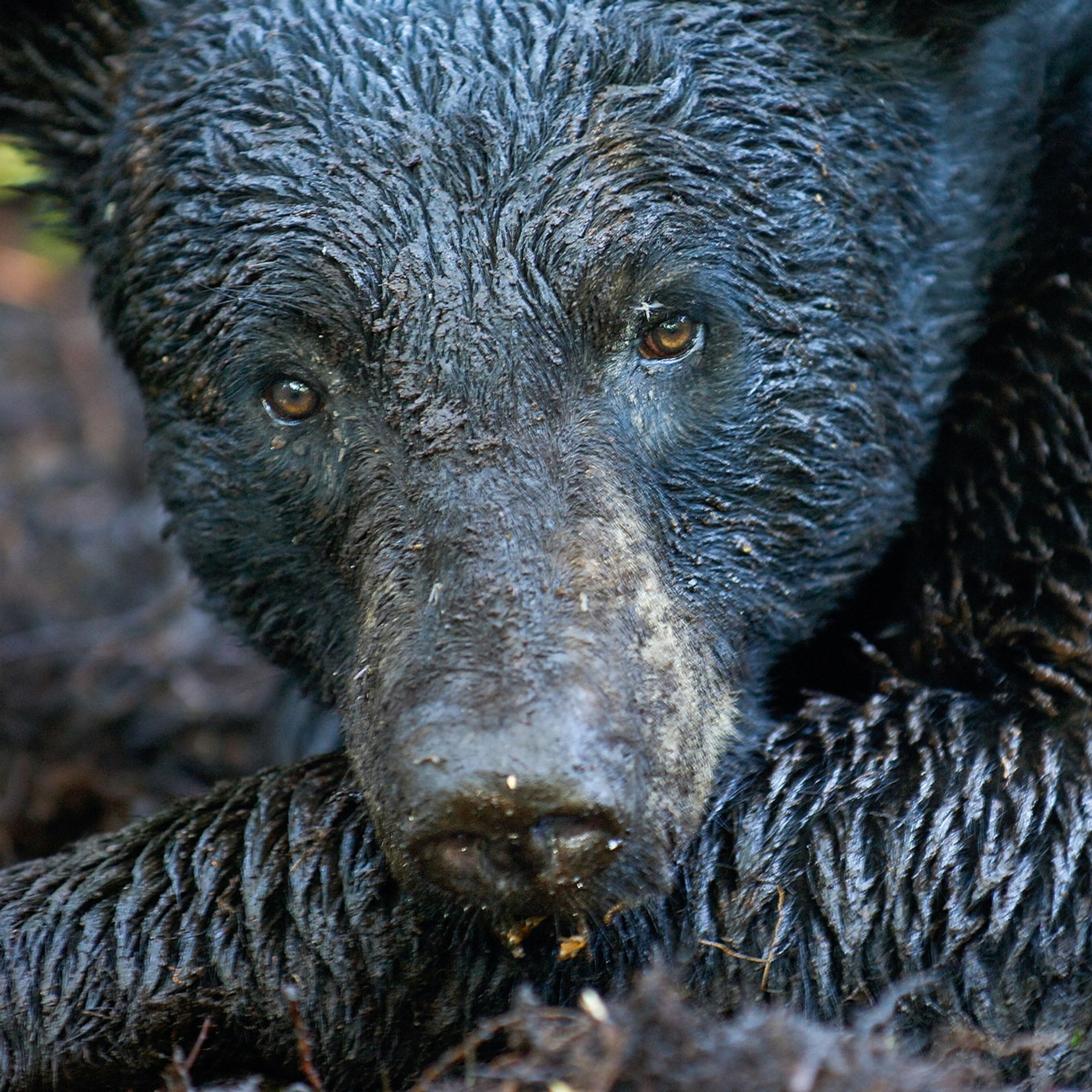Black Bears Are Rebounding—What Does That Mean For People?
The North American omnivores have expanded their ranges in recent years thanks to healthier forests and stricter laws—which means more run-ins with people.
If you live in the eastern United States, you might want to keep an eye on your backyard for some surprising summer visitors.
Bears.

The American black bear (Ursus americanus), which was heavily diminished by overhunting, habitat loss, and fragmentation in the past century, is making an impressive comeback in parts of North America—particularly the East. An estimated 800,000 black bears roam the continent, slowly returning to many of their old haunts.
Three success stories highlight the resurgence of the up-to-600-pound (270-kilogram) omnivores. The Department of the Interior announced in May that Louisiana's black bears may be pulled from the Endangered Species list, where they've sat since 1992. Years of legal protection, better habitat, and a reintroduction program have helped boost the population from as few as 200 animals to some 750 or more.
In Florida, an extensive new survey shows bear numbers have doubled, to some 1,200 animals, in one area and increased by almost a third in another since 2002. (See "Why Are Black Bear Attacks Up in Florida?")
And in Maryland, bears have rebounded strongly, with 1,000 adults now living in two western counties. That's due to longtime laws in Maryland and surrounding states that protect the species, plus the growth of more bear-friendly landscapes—for example, young forests have matured into trees that produce more food, like acorns, hickory nuts, and cherries.
American black bears are doing well all over.Harry Spiker, Biologist for the Maryland Department of Natural Resources
"We've been seeing high reproductive rates with low infant mortality," a sign of plentiful resources, says Harry Spiker, a biologist for the Maryland Department of Natural Resources.
In the United States, black bears are still only present in about half of their historic range (see map below), compared with Canada, where the mammals still roam at least 95 percent of the lands they previously occupied, according to a 2014 study.
Still, "American black bears are doing well all over," Spiker says: Scientists believe there are now more black bears in North America than there were when the settlers arrived in the 1600s.
Living With Bears
Pick a U.S. state where black bears ever lived, and their history will go something like this.
"When settlers came here we had bears in every county," says Maryland's Spiker. "But one thing settlers do is clear land. They needed space and resources for the charcoal industry, agriculture, and shipbuilding." And they took it.
People saw bears as competition, and feared them. "So they killed them indiscriminately." But most of the damage, he says, was from that habitat loss—which affected other species, too.
Despite such challenges, "bears clung on by their toenails in western Maryland," where the steep terrain made it more difficult for people to log forests. The animals disappeared from other parts of the state, where logging was more widespread.
"Now that our habitat has recovered, middle Appalachia [map] has some of the best bear habitat in the country. So we expect the growth trend to continue," Spiker says.
But with bears taking up available habitat in western Maryland, homeless bears are forced to move east—into more human-populated areas—in search of new territory.

It's inevitable, then, that bears and people are going to be seeing more of each other. For one, bears are crossing major roads more frequently—vehicular collisions are now their biggest killers—and they have no qualms about entering the suburbs to raid a bird feeder, a bag of dog food on a porch, or an overflowing trash can, among other tempting treats.
"Bears will try every possible space where they can find food. That means they'll duck into town for a meal, which will lead to challenging situations," says Stephen Herrero, a bear ecologist at the University of Calgary who has written extensively on human-black bear interactions. The problem will persist until people learn how to better store their edibles.
But once they do, "I think it's an acceptable risk, for the rewards of knowing these amazing animals are out there, and knowing your environment is healthy and capable of supporting them." (Also see "Wolves and Bears Stage Comeback in Crowded, Urban Europe.")
If growing bear numbers sound threatening, consider this: Even with a population of 800,000, black bears attack fewer than 25 people a year and kill around 2. That's not to diminish the impact of those tragedies, but statistically speaking, bears aren't our enemies.
Careful Hunting
Coexisting with bears means management by hunting—a controversial but effective way to keep a wild bear population from growing too fast. In 2004 in Maryland, for example, after 51 years of protection, the animals became fair game. Limited permits are available to hunters through a lottery. (Also see
"Should We Bait Black Bears With Doughnuts? Maine Voters Will Decide.")
In fact, 32 of 41 states where bears have been spotted currently have a hunting season. But giving the okay to kill "doesn't mean suddenly there's an open season on bears," cautions wildlife biologist Maria Davidson, of the Louisiana Department of Wildlife and Fisheries.
In her state, "when they do go off the [Endangered Species] list, there will be no real change to the protections they enjoy."
Louisiana, like many states, has bear-management areas. Data will show if and when any area can sustain a harvest, she says, but "maintaining the viability of the bear population will always be our priority."
A lot of hunters share that priority—and the fees they pay fund most state conservation efforts. Private landowners, too, are involved, putting property into conservation easements to help stitch together fragmented habitat. This powerful joint effort has gotten bears back to where they are now, Davidson says.
Don't Play Dead
Meanwhile, if you're not out hunting bears, but sense one is following you, what should you do? (See "Video of Yellowstone Bear Chasing Tourists Isn't What You Think.")
"Never play dead," says Herrero. "Act aggressively, stand your ground. If you're in a group, stay together."
If the bear does attack, "any weapons, bear spray, that's the time to think about using them."
Remember, though, that "having a bear follow you in the forest doesn't usually mean the end."
Vaguely comforting words to those of us with bears moving in next door.
Follow Jennifer S. Holland on Twitter.








